 The Information Commissioner’s Office ordered the University of East Anglia’s Climatic Research Unit to disclose its CRUTEM dataset to Jonathan Jones from Oxford University after he used the Freedom of Information Act. Jones requested access to the CRU archive of world temperature data – recorded jointly with the Met Office – back in 2009, and it was in June this year the ruling was made and the University given one month to deliver the data.
The Information Commissioner’s Office ordered the University of East Anglia’s Climatic Research Unit to disclose its CRUTEM dataset to Jonathan Jones from Oxford University after he used the Freedom of Information Act. Jones requested access to the CRU archive of world temperature data – recorded jointly with the Met Office – back in 2009, and it was in June this year the ruling was made and the University given one month to deliver the data.
Yearly Archives / 2011
A look at Horizon 2020….
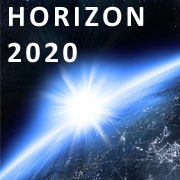 A workshop this week on the new Horizon 2020 outlined the main objectives of the new programme. These are proposed as:
A workshop this week on the new Horizon 2020 outlined the main objectives of the new programme. These are proposed as:
*To move from different priorities in each programme and initiative to common strategic priorities focusing on societal challenges, competitiveness and research excellence;
*To move from gaps between the stages (R & D, demonstration, market take up, etc) to coherent support for projects and organisations across the innovation cycle from research to retail;
*To move from a strong focus on research and technological development to stronger support for innovation, including non-technological innovation and market take-up.
The societal challenges will include 5 main strands that he explicitly linked to existing FP7 activity:
- Inclusive societies (Socio-economic Sciences and Humanities);
- Responsible Research and Innovation (Science in Society);
- Secure Societies (Security research);
- Digital Societies (ICT to improve inclusion and equal participation, ICT for trust and confidence/security);
- Knowledge base for research and innovation policies (Coherent Development for Research Policies)
Latest EU Social Sciences & Humanities funding
 Free movement of lawyers: proposals should evaluate the legal framework for the free movement of lawyers against market and regulatory developments in the single market. Funding is worth up to €500,000 over 11 months. Deadline 15.09.11
Free movement of lawyers: proposals should evaluate the legal framework for the free movement of lawyers against market and regulatory developments in the single market. Funding is worth up to €500,000 over 11 months. Deadline 15.09.11
Socio-economic impacts of new measures to improve accessibility of goods and services for people with disabilities: proposals should explore the merits of adopting EU regulatory measures to substantially improve the proper functioning of the internal market for accessible products and services, including measures to step up the use of public procurement. Funding is worth up to €800,000 over 12 months. Deadline: 22.08.11
Roma in education: this funding supports transnational cooperation projects in the development and implementation of coherent and comprehensive joined-up educational measures to raise the participation and attainment levels of Roma students in general education and vocational educational training, and to support network activities for awareness-raising of the social integration of Roma children and students. The total budget for the call is €584,000 and each grant is worth up to €150,000 over a maximum of 12 months. Deadline: 16.09.11
European policy network on the education of children and young people with a migrant background: this funding supports cross-European collaboration between high level decision makers, academics and practitioners for raising the educational attainment of children and young people from a migrant background. The maximum duration of projects is 36 months, and a total budget of €500,000 is available for 2012. Deadline 14.10.11
Support for the Digitisation of European Cinemas: the aim of the ‘digitisation of cinemas’ scheme is to encourage cinemas showing a significant percentage of non-national European works to exploit the possibilities offered by digital. This call for proposals aims to facilitate the digital transition of cinemas screening European films by supporting the side costs linked to the purchase of a digital projector. Closing date: 15 September 2011
e-Skills for Competitiveness and Innovation: the aim of this fund is to develop, with relevant stakeholders, a coherent vision and a detailed roadmap as well as foresight scenarios on the supply and demand of e-skills for competitiveness and innovation in Europe (2011–2015). It will build on the momentum of the EU e-skills strategy. The skills needed include ICT, marketing, design, law, management, etc. for entrepreneurs, managers and ICT professionals and advanced users in all industries. Closing date: 16 September 2011
Six new priority Research Infrastructures for Europe
 The European Strategy Forum on Research Infrastructures (ESFRI) roadmap has just been updated, with six new research infrastructures added. The ESFRI roadmap was set up to support a coherent and strategy-led approach to policy-making on research infrastructures. The six new research infrastructures that have been added are considered to have a major importance for the research landscape in the EU. Once on the ESFRI roadmap, partners will work towards securing national funding in order to construct and operate them.
The European Strategy Forum on Research Infrastructures (ESFRI) roadmap has just been updated, with six new research infrastructures added. The ESFRI roadmap was set up to support a coherent and strategy-led approach to policy-making on research infrastructures. The six new research infrastructures that have been added are considered to have a major importance for the research landscape in the EU. Once on the ESFRI roadmap, partners will work towards securing national funding in order to construct and operate them.
Three of the infrastructures are in the bio and medical sciences (BMS) field and three in energy. In the energy field, EU-SOLARIS is the European SOLAR Research Infrastructure for Concentrating Solar Power, MYRRHA is the Multipurpose hybrid Research Reactor for High-technology Applications and Windscanner is the European Wind Scanner Facility. In the BMS field, ANAEE is the Infrastructure for Analysis and Experimentation on Ecosystems, ISBE is the Infrastructure for Systems Biology-Europe and MIRRI is the Microbial Resource Research Infrastructure. The updated roadmap also provides a report on the implementation of and the progress made by the other ESFRI Research Infrastructures.
“Music festivals are an ideal place to share science”
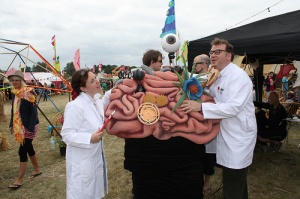 Since 2007 Guerilla Science, supported by the Wellcome Trust, STFC and The Royal Academy of Engineering, has been running bespoke events, activities and performances in unconventional habitats for science. The aim is to embed science into culture by taking researchers out of their institutions and into the public domain thus providing researchers with new ways of engaging with people. As part of this they have been running events at music festivals, such as Glastonbury and the Secret Garden Party. By combining science with art and music they aim to reach a young artsy crowd with little background in science.
Since 2007 Guerilla Science, supported by the Wellcome Trust, STFC and The Royal Academy of Engineering, has been running bespoke events, activities and performances in unconventional habitats for science. The aim is to embed science into culture by taking researchers out of their institutions and into the public domain thus providing researchers with new ways of engaging with people. As part of this they have been running events at music festivals, such as Glastonbury and the Secret Garden Party. By combining science with art and music they aim to reach a young artsy crowd with little background in science.
 A survey in 2010 demonstrated that ca. 80% weren’t expecting to encounter science at a festival and that many participants said they stumbled across the activities by accident but stayed because they looked fun. In addition 84% said they would ‘definitely take part again’.
A survey in 2010 demonstrated that ca. 80% weren’t expecting to encounter science at a festival and that many participants said they stumbled across the activities by accident but stayed because they looked fun. In addition 84% said they would ‘definitely take part again’.
Promoting research through the arts is not new to Bournemouth University, and the Centre for qualitative Research in HSC has won a number of awards which include this type of activity as part of the dissemination plan, for example Dr Kip Jones‘ New Dynamics of Ageing ESRC-funded project which has produced a film – Rufus Stone.
Last chance for some business cards!
 Julie Northam previously advertised on the blog the opportunity for academic staff to order business cards through the Research Development Unit. This funding is only available until the end of July so if you would like some business cards to aid your networking please drop me an email (sdowdle@bournemouth.ac.uk) by Friday 22nd July so I can order them for you.
Julie Northam previously advertised on the blog the opportunity for academic staff to order business cards through the Research Development Unit. This funding is only available until the end of July so if you would like some business cards to aid your networking please drop me an email (sdowdle@bournemouth.ac.uk) by Friday 22nd July so I can order them for you.
Inculcating the Discourse: Influencing Public Policy
Jonathan Wardle, Director of CEMP and Head of Enterprise in the Media School, discusses how research undertaken in universities can better influence public policy and lead to research impact…
Higher Education is in the main ineffective at influencing public policy – hence the new mantra of impact. In recent days, since the News of the World phone hacking revelations hit the mainstream press, academics on the various JISC media and communications mailing lists have bemoaned the fact that nobody seems to listen. Comments have included:
media academics generally have been talking about the excessive power and influence of Murdoch. By the time I started studying the field, in the early 1990s, Murdoch’s power was already part of the canon-part of British Media 101. Why did no-one listen to us?
Time after time distinguished academics who are members of this list have given freely of their time to respond to government consultations on the CPBF’s behalf, and have repeatedly found their recommendations turned on their heads in the subsequent legislation.
So, are we ignored because we have nothing to offer? I don’t think so, much of the research produced in my disciplinary area is well informed, much of the empirical work is rigorous and in the main the material is usually very readable and publicly available.
So why? Well, a year or so ago I wrote a paper for the Media Education Research Journal, it was a critical discourse analysis of the ‘Digital Britain’ policy process. Amongst other things, in my study I reviewed hundreds of submissions to the consultation process, many of which came from academics.
 Yet in the main they were ignored…and it was clear why. They were at odds with each other, they would have been difficult to translate into policy and they lacked recommendations for future action. Compare this with the submissions from Sector Skills Councils, trade associations and other collectives and it was clear where we were going wrong. These submissions tended to speak with one voice, included quantitative as well as qualitative evidence and made clear recommendations for future policy. Some of this material was lifted verbatim by the DCMS and inserted into the final published policy. These groups ‘inculcated the discourse’ to great effect.
Yet in the main they were ignored…and it was clear why. They were at odds with each other, they would have been difficult to translate into policy and they lacked recommendations for future action. Compare this with the submissions from Sector Skills Councils, trade associations and other collectives and it was clear where we were going wrong. These submissions tended to speak with one voice, included quantitative as well as qualitative evidence and made clear recommendations for future policy. Some of this material was lifted verbatim by the DCMS and inserted into the final published policy. These groups ‘inculcated the discourse’ to great effect.
If we want our work to influence public policy and professional practice we have to work harder to speak with a coherent voice. That means, firstly, actively getting involved with your discipline area subject associations. I’ve recently joined the executive of the Media Education Association, which is regularly consulted on curriculum changes in Schools. Secondly, organising symposiums and events, which bring together academics, practitioners and policy makers. For example a couple of years ago Prof Martin Kretschmer, Sukhpreet Singh and I organised an event at Fremantle (the producer of Britain’s Got Talent and the Apprentice) to disseminate the findings of our ESRC study on TV Formats, and third and finally we need to be better at turning our research into recommendations for future practice.
If we don’t, I’m confident in years to come, when the next moral panic rears its head. Our voices wont be heard….again.
Jonathan Wardle
Director of CEMP and Head of Enterprise
Media School
Changes to the Research & Enterprise Database at BU
![]() On 18th July 2011 BU’s internal database (RED, previously known as RAKE) which stores information on the university’s research and enterprise projects will move to a new platform. You will not be able to access the system on the 18th of July while the changes are taking place.
On 18th July 2011 BU’s internal database (RED, previously known as RAKE) which stores information on the university’s research and enterprise projects will move to a new platform. You will not be able to access the system on the 18th of July while the changes are taking place.
Academic staff can access this database to review their own record of bidding and awarded projects which can be useful for appraisals. If you would like further details on how to use the database, please contact me at the details below.
Although some things have moved around, the database is very similar to the old version and should be simpler to navigate through. The database can be accessed using the same link as before red.bournemouth.ac.uk . Your login details are the same as your standard university login details.
If you have any queries please contact Susan Dowdle (sdowdle@bournemouth.ac.uk, ext 61209).
EU team with British Researchers discover brightest object in Universe ever
 UK astronomers are part of a European team that has discovered the most distant quasar ever seen. It is the brightest object to be observed in the early universe and is powered by a black hole with a mass two billion times that of the Sun. This artist’s impression shows how the distant quasar may have looked (Credit: ESO / M Kornmesser).
UK astronomers are part of a European team that has discovered the most distant quasar ever seen. It is the brightest object to be observed in the early universe and is powered by a black hole with a mass two billion times that of the Sun. This artist’s impression shows how the distant quasar may have looked (Credit: ESO / M Kornmesser).
Intellectual Property rules in FP7 Projects new factsheet
 The European IPR Helpdesk has published a fact sheet on the IP rules under FP7 projects: “Introduction to IP rules in FP7 Projects”. The document aims to provide the reader with an easy and practical overview of these rules, as well as the terminology commonly used.
The European IPR Helpdesk has published a fact sheet on the IP rules under FP7 projects: “Introduction to IP rules in FP7 Projects”. The document aims to provide the reader with an easy and practical overview of these rules, as well as the terminology commonly used.
Latest EU energy related funding
 European Energy Efficiency Fund: this fund will invest in energy saving, energy efficiency and renewable energy projects, particularly in urban settings, with the aim of achieving at least a 20 per cent energy saving or an equivalent reduction in carbon dioxide and other greenhouse gas emissions. The fund will offer a wide range of funding streams such as senior and junior loans, guarantees or equity participation to local, regional and, under certain conditions, to national public authorities to promote sustainable energy investments. At its launch, the fund is worth a total of €265m with contributions from the European Investment Bank and national financial institutions.
European Energy Efficiency Fund: this fund will invest in energy saving, energy efficiency and renewable energy projects, particularly in urban settings, with the aim of achieving at least a 20 per cent energy saving or an equivalent reduction in carbon dioxide and other greenhouse gas emissions. The fund will offer a wide range of funding streams such as senior and junior loans, guarantees or equity participation to local, regional and, under certain conditions, to national public authorities to promote sustainable energy investments. At its launch, the fund is worth a total of €265m with contributions from the European Investment Bank and national financial institutions.
Eco-innovation projects: this funding supports the market penetration of an environmental product, service, management practice or process with a proven track record, but which has not yet been fully marketed. The indicative budget for this call is €36 million and funding will provide up to 50 per cent of a project’s costs over a period of 36 months. Closing date: 8 September 2011.
Assessment of scenarios and options towards a resource-efficient Europe: proposals should identify inefficient uses of resources that cut across different sectors and policy areas at meso- and macro-economic level and quantitatively assess the potential for, and effects of, efficiency improvements within systems. Funding is worth between €700,000 and €750,000 over 24 months. Deadline: 22.08.11.
Multilateral Research on Material Efficiency: Proposals are invited on the topic of Interdisciplinary Program on Material Efficiency – A first step towards sustainable manufacturing. This call will be supported by €10 million over a three year period and it is hoped that between eight and ten collaborations will be funded.
Commission proposes €80bn for Horizon 2020
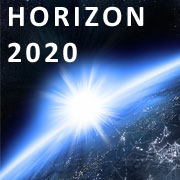 The next Framework Programme – Horizon 2020 – will be worth €80.2 billion if the European Commission gets its way, the proposal for the 2014-2020 EU budget has shown. This would represent a 46 per cent increase on the budget of Framework 7, which runs from 2007 to 2013 and is worth about €56bn. In a statement announcing the budget proposal, the Commission said that the increase is meant to boost Europe’s economy and shows a lasting commitment to research, science and innovation.
The next Framework Programme – Horizon 2020 – will be worth €80.2 billion if the European Commission gets its way, the proposal for the 2014-2020 EU budget has shown. This would represent a 46 per cent increase on the budget of Framework 7, which runs from 2007 to 2013 and is worth about €56bn. In a statement announcing the budget proposal, the Commission said that the increase is meant to boost Europe’s economy and shows a lasting commitment to research, science and innovation.
Europe 2020: latest Structural Funds update
 The latest EU proposals reveal several key issues for UK Structural Funds which are summarised below.
The latest EU proposals reveal several key issues for UK Structural Funds which are summarised below.
Less money for the UK: the amount received by the UK is likely to fall (as GDP is higher than in other Member States). The overall budget for the structural funds at EU level will remain roughly the same (€376 billion); the greatest proportion will be earmarked for poor areas below 75% of the EU GDP average (unlikely to be any in England). The levels of total investment will still be significant and all areas will continue to have at least some access to funds.
New opportunities for part of England: there is opportunity for some areas of England to benefit from greater levels of structural funding. In the current programme, areas were either identified as rich (competitiveness) or poor (convergence) with some phasing in areas in between, receiving levels of funding accordingly. From 2014 it is proposed a new transition category be created between the two, at the level 75%-90% GDP, which would receive greater levels of funding than competitiveness areas. All other areas, with a GDP above 90%, will continue to benefit from competitiveness funding as they do now.
Tightening priorities: structural funds may be targeted at a fewer number of EU priorities. Competitiveness and transition areas will be required to focus economic development spending (ERDF) on energy efficiency, renewable energies, SME competitiveness and innovation. It is also proposed at least half of structural funds must be spent on skills development projects (ESF) in next programme round.
Stronger performance management: the EU will negotiate a partnership contract with the UK government, setting out a commitment for spending structural funds to address priorities and progress will be assessed through a performance framework measuring outcomes.
New funds for research, infrastructure and education: a range of expenditure lines will be integrated into three new EU-wide programmes: a ‘Connecting Europe Facility’ is proposed to offer €40 billion into transport, energy and ICT infrastructure projects; ‘Horizon 2020’ will integrate a range of research and innovation funds into a single €80 billion programme; and a single education and youth programme of €15.2 billion will integrate the range of youth development, learning and exchange funds.
Rural development: the rural development element of the Common Agricultural Policy (CAP) will receive €89.9 billion from 2014-20, and will be subject to similar performance and conditionality measures like structural funds. Funding for farm payments is proposed at €281.8 billion, roughly the same as current. The EU will make proposals permitting flexibility between the rural development and farm payment funds.
More coordinated spending: a common strategic framework for ERDF, ESF, the rural development programme will aim to join up the strategic ambitions of the different funds, as driven by the EU2020 strategy.
Financial engineering instruments: proposals place more emphasis on using the EU budget to leverage additional private sector investment.
Simplified administration: proposals aim to simplify, speed up and improve administration and delivery, requiring that both the EU and member states commit to radical simplification.
Negotiation timetable: proposals must be agreed unanimously by Member States, who are working towards an agreement for the end of 2012. Alongside this, important detail for each of the individual funds will be published in the autumn 2011, and Government is beginning to plan how funding programmes will be administered in England.
Excellent example of public engagement in research, resulting in societal impact
 Today is my first day back in the office after a road trip from Vancouver to Los Angeles, taking in many exciting cities, national parks, activities, etc en route. From spotting killer whales in the San Juan Islands to making the most of tax free shopping in Portland to hydrobiking in Long Beach harbour, I’ve packed in lots of fun! One of the coolest things we did, however, was to go to the La Brea Tar Pits at the Page Museum in Los Angeles.
Today is my first day back in the office after a road trip from Vancouver to Los Angeles, taking in many exciting cities, national parks, activities, etc en route. From spotting killer whales in the San Juan Islands to making the most of tax free shopping in Portland to hydrobiking in Long Beach harbour, I’ve packed in lots of fun! One of the coolest things we did, however, was to go to the La Brea Tar Pits at the Page Museum in Los Angeles.
 The La Brea Tar Pits is one of the world’s most famous fossil localities, recognized for having the largest and most diverse assemblage of extinct Ice Age plants and animals in the world. Whilst I was walking around the museum looking at skeletons of giant sloths and sabretooth tigers, a fossilised mammoth tooth (the size of my head) and a display of 404 dire wolf skulls, I had a eureka! moment. The museum is an excellence example of transparent research that engages the public and results in huge societal impact.
The La Brea Tar Pits is one of the world’s most famous fossil localities, recognized for having the largest and most diverse assemblage of extinct Ice Age plants and animals in the world. Whilst I was walking around the museum looking at skeletons of giant sloths and sabretooth tigers, a fossilised mammoth tooth (the size of my head) and a display of 404 dire wolf skulls, I had a eureka! moment. The museum is an excellence example of transparent research that engages the public and results in huge societal impact.
The entire research lifecycle is onsite and visible to visitors, including information on:
- how the research is funded and why it is important to society
- how different disciplines are working collaboratively
- the tools and techniques used
- how the research is changing our understanding of evolution and science
- how different community groups are engaging with the research
- examples of research outputs produced
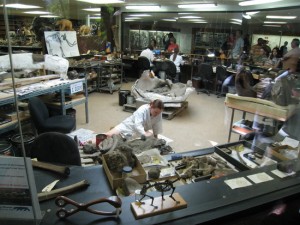
Through windows at the Page Museum Laboratory, visitors can watch bones being cleaned and repaired. Visitors can also visit Pit 91 and see a tar pit being excavated.

The Museum periodically canvasses visitor opinions and surveys changes in public understanding to ensure that research impact is being maximised and to justify the public funding that makes the research possible.
Evidently this integration of engagement, access to research and demonstrable societal impact is easier in some disciplines than others but research shouldn’t be taking place behind closed doors in universities; members of the public should be involved throughout the research lifecycle. This is a key strategy of Research Councils UK (RCUK) and other major funding bodies (such as Defra and the Royal Society). You can access the Concordat on Engaging the Public with Research here.
not quite EU but China & UK sign new agreement!
Scientific and technical collaboration between the United Kingdom and China has expanded further with the signing of a new agreement covering sectors including energy, advanced engineering and life sciences. The Science and Technology Facilities Council (STFC) and the China Guanghua Science and Technology Foundation have signed a Memorandum of Understanding (MOU), coinciding with the meeting in London of Prime Minister David Cameron and Chinese Premier Wen Jiaba o.
o.
Digital Hub event on 19th July
The launch event for the Digital Hub is drawing near and we have over 70 registrations and growing interest and publicity. This event is primarily aimed at external organisations and is designed to showcase BU research related to the creative and digital economy. We’ve got a great program lined up and a fantastic keynote speaker who is also an ex-BU graduate. More information is available at : http://digital-day-bournemouth-university.eventbrite.com/ and it would be great if you know of any businesses and organisations who would benefit from attending the event if you could push this link and information out to your networks. As there are already a lot of staff participating in the event from 5 different schools we are not opening it up to general staff registration, however if you would like to find out more about the Hub please email : thedigitalhub@bournemouth.ac.uk
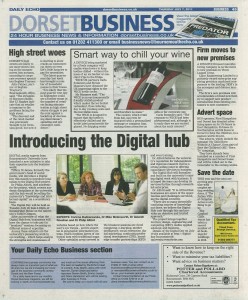
ERAB: The European Foundation for Alcohol Research grants available
 These fund any aspect of biomedical or psychosocial research into beer or alcohol. Grants are worth €50,000 per annum over one to two years and the deadline is 10th April 2012.
These fund any aspect of biomedical or psychosocial research into beer or alcohol. Grants are worth €50,000 per annum over one to two years and the deadline is 10th April 2012.
How difficult is getting FP7 funding? Not too hard for some UK and EU fraudsters!
 Nature has reported that the European Anti-Fraud Office are currently in the process of prosecuting project consortia who received EU grants for fake research projects. The fraud was committed by a number of beneficiaries who appear to have made up entire research projects, including whole research teams, fictitious companies and subcontractors, and won EU grants for these projects. It appears that the projects were designed solely to obtain the funds and that no actual research activity was carried out.
Nature has reported that the European Anti-Fraud Office are currently in the process of prosecuting project consortia who received EU grants for fake research projects. The fraud was committed by a number of beneficiaries who appear to have made up entire research projects, including whole research teams, fictitious companies and subcontractors, and won EU grants for these projects. It appears that the projects were designed solely to obtain the funds and that no actual research activity was carried out.
Four collaborative projects under in the ICT area were terminated by the European Commission, and several individuals were charged for the fraud. Further projects are currently being investigated in the UK, France, Greece, Austria, Sweden, Slovenia and Poland.
It should be stressed that this is a very rare and unusual example of fraud in EU grants, especially when it comes to research grants, and it seems it is never possible to completely prevent fraud, even with the already very strict and robust systems in place for the Framework Programme. Overall, there continues to be a lot of support for simplification of the EU funding programmes including for greater acceptance of own (nationally approved) accounting systems, clarity and consistency.











 Fourth INRC Symposium: From Clinical Applications to Neuro-Inspired Computation
Fourth INRC Symposium: From Clinical Applications to Neuro-Inspired Computation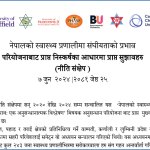 Writing policy briefs
Writing policy briefs Upholding Excellence: The Concordat to Support Research Integrity
Upholding Excellence: The Concordat to Support Research Integrity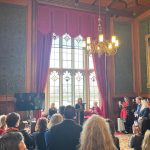 Today’s Documentation Will Serve Tomorrow’s Justice
Today’s Documentation Will Serve Tomorrow’s Justice ECR Funding Open Call: Research Culture & Community Grant – Application Deadline Friday 12 December
ECR Funding Open Call: Research Culture & Community Grant – Application Deadline Friday 12 December MSCA Postdoctoral Fellowships 2025 Call
MSCA Postdoctoral Fellowships 2025 Call ERC Advanced Grant 2025 Webinar
ERC Advanced Grant 2025 Webinar Horizon Europe Work Programme 2025 Published
Horizon Europe Work Programme 2025 Published Horizon Europe 2025 Work Programme pre-Published
Horizon Europe 2025 Work Programme pre-Published Update on UKRO services
Update on UKRO services European research project exploring use of ‘virtual twins’ to better manage metabolic associated fatty liver disease
European research project exploring use of ‘virtual twins’ to better manage metabolic associated fatty liver disease